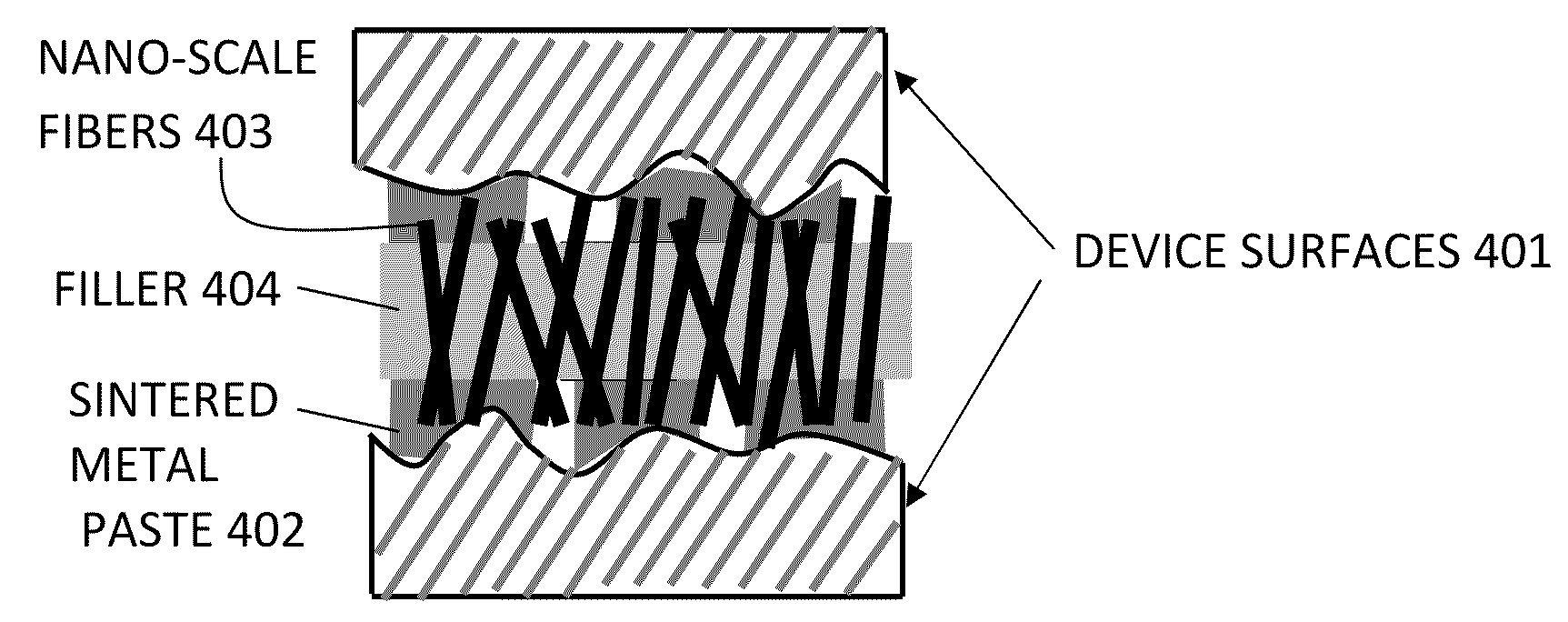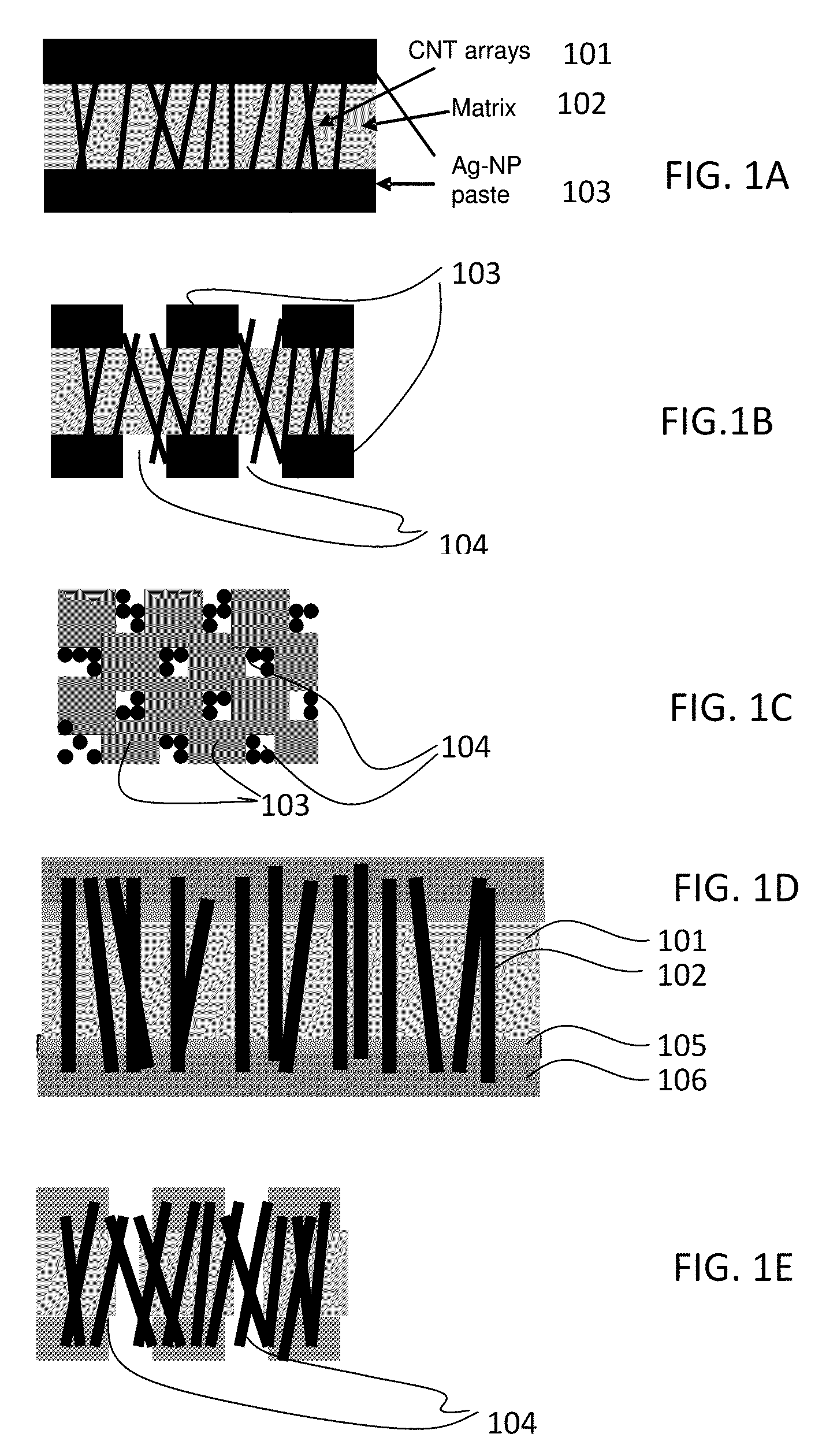Composite thermal interface material system and method using nano-scale components
a thermal interface and nano-scale technology, applied in the field of thermal interface materials (tims), can solve the problems of significant thermal resistance, difficult to meet the needs of nano-scale components, so as to reduce mechanical stress, reduce stress, and reduce the effect of mechanical stress
- Summary
- Abstract
- Description
- Claims
- Application Information
AI Technical Summary
Benefits of technology
Problems solved by technology
Method used
Image
Examples
Embodiment Construction
[0069]For the purposes of this application the terms “nanometer realm” or “nano-scale” are understood to mean approximately 1-100 nm, and preferably 1-10 nm. “Nano-particles” will be in this same size range. Micro range will be understood to mean 0.1 to about 10 microns.
[0070]FIG. 1A is a schematic diagram of a TIM system in accordance with the invention. FIG. 1A illustrates nano-scale fibers 101, such as CNT's stabilized in a matrix 102 and sandwiched between two capping layers 103, such as silver nanoparticle paste. The fibers 101 may be vertically aligned or randomly oriented. There will be some expense associated with getting the fibers to be aligned, but aligned fibers are expected to demonstrate superior performance, and are therefore preferred. On the other hand, even in an unaligned state, a portion of the fibers 101 will be oriented normal to the interface plane. The matrix 102 may include organic or organic / inorganic hybrid material stabilizing the arrays or networks of na...
PUM
| Property | Measurement | Unit |
|---|---|---|
| size | aaaaa | aaaaa |
| temperature | aaaaa | aaaaa |
| height | aaaaa | aaaaa |
Abstract
Description
Claims
Application Information
 Login to View More
Login to View More - R&D
- Intellectual Property
- Life Sciences
- Materials
- Tech Scout
- Unparalleled Data Quality
- Higher Quality Content
- 60% Fewer Hallucinations
Browse by: Latest US Patents, China's latest patents, Technical Efficacy Thesaurus, Application Domain, Technology Topic, Popular Technical Reports.
© 2025 PatSnap. All rights reserved.Legal|Privacy policy|Modern Slavery Act Transparency Statement|Sitemap|About US| Contact US: help@patsnap.com



